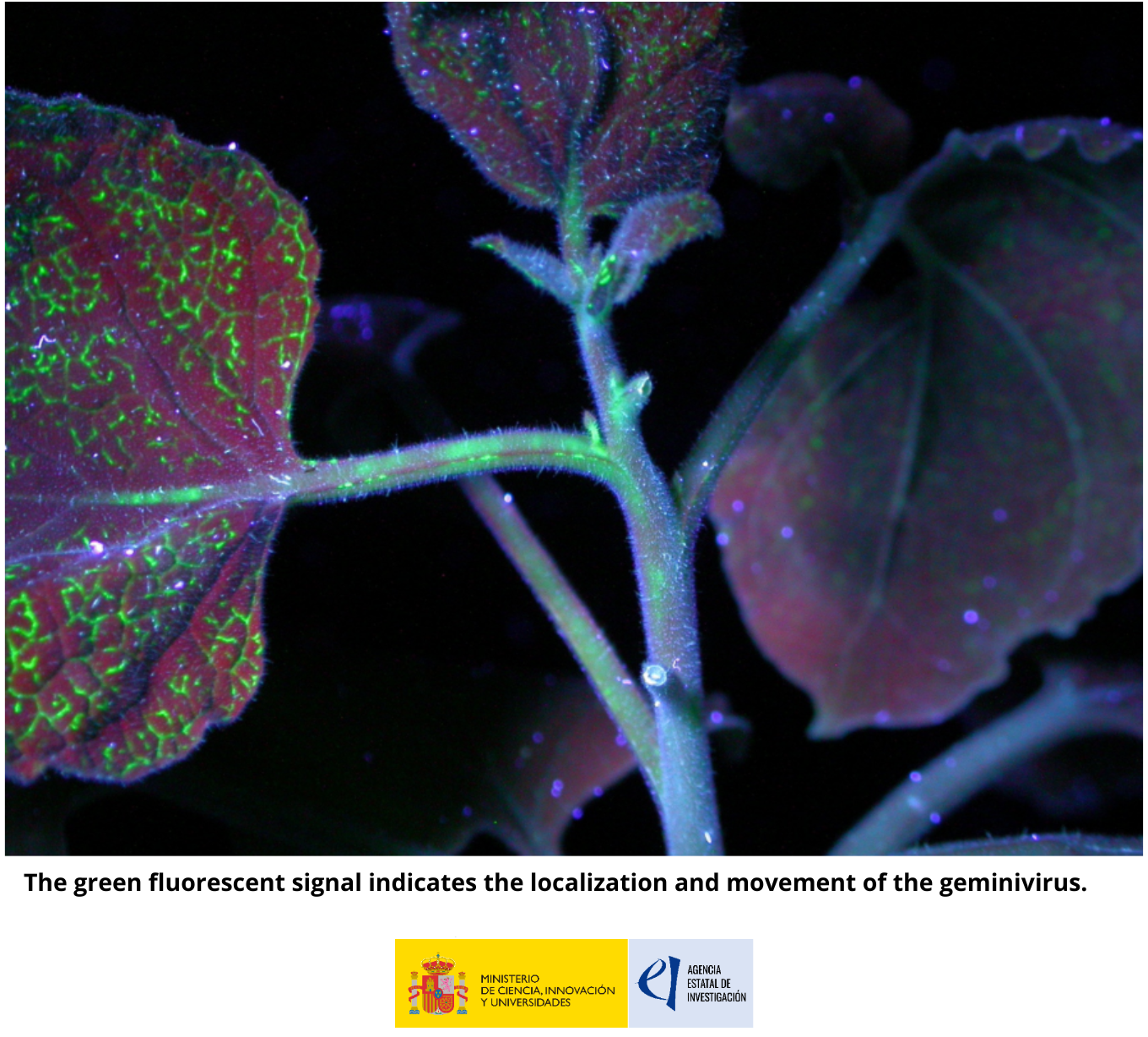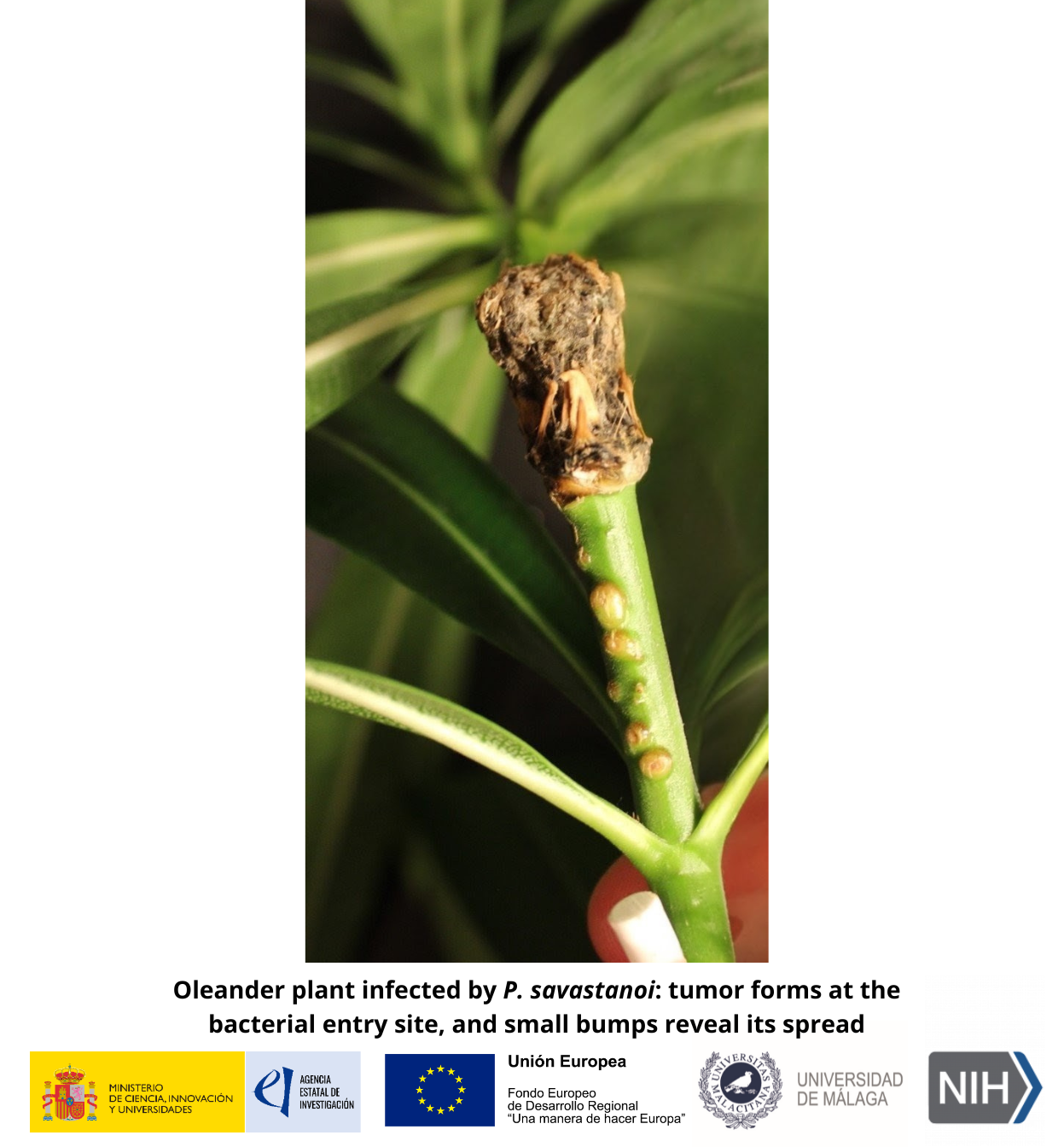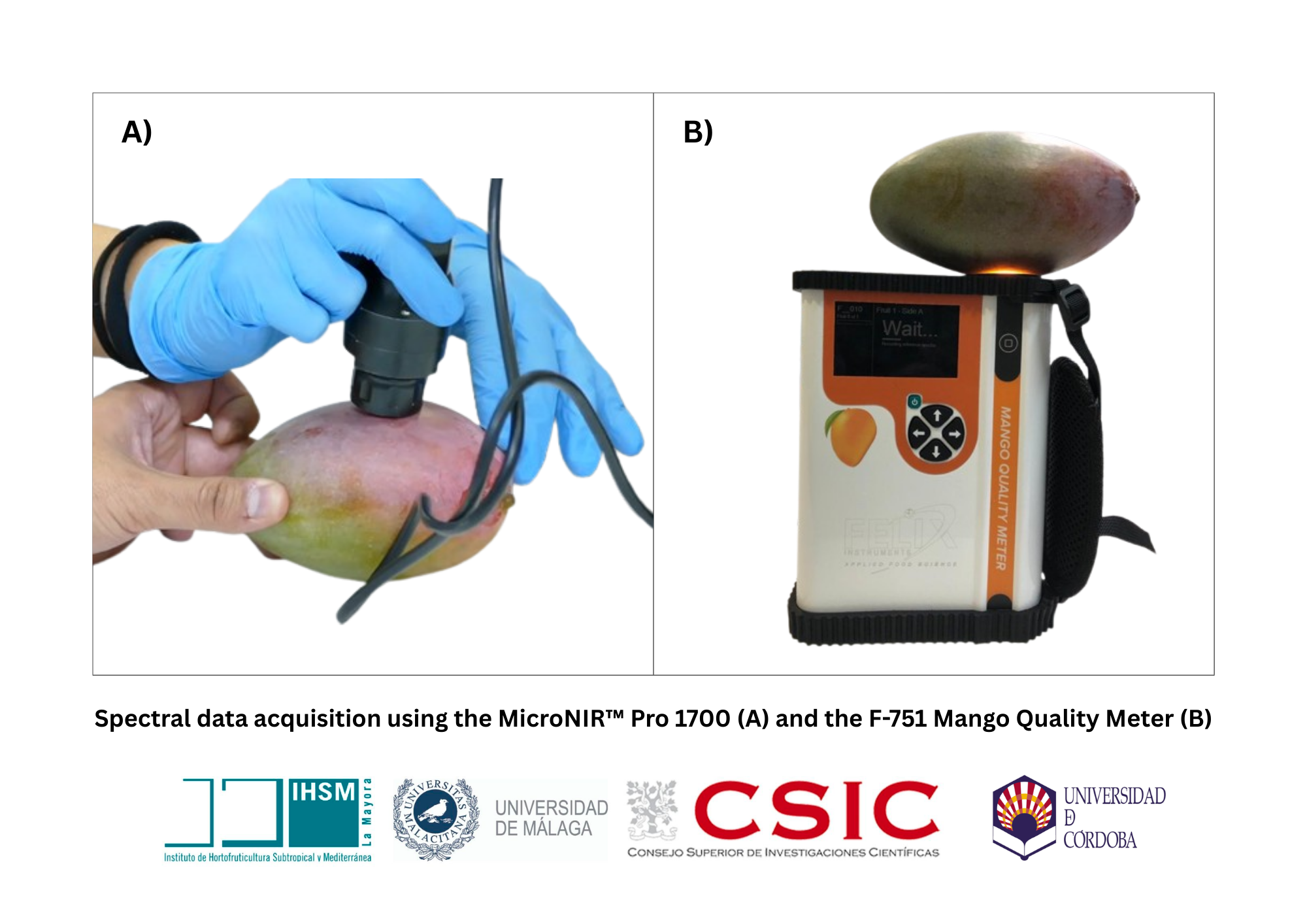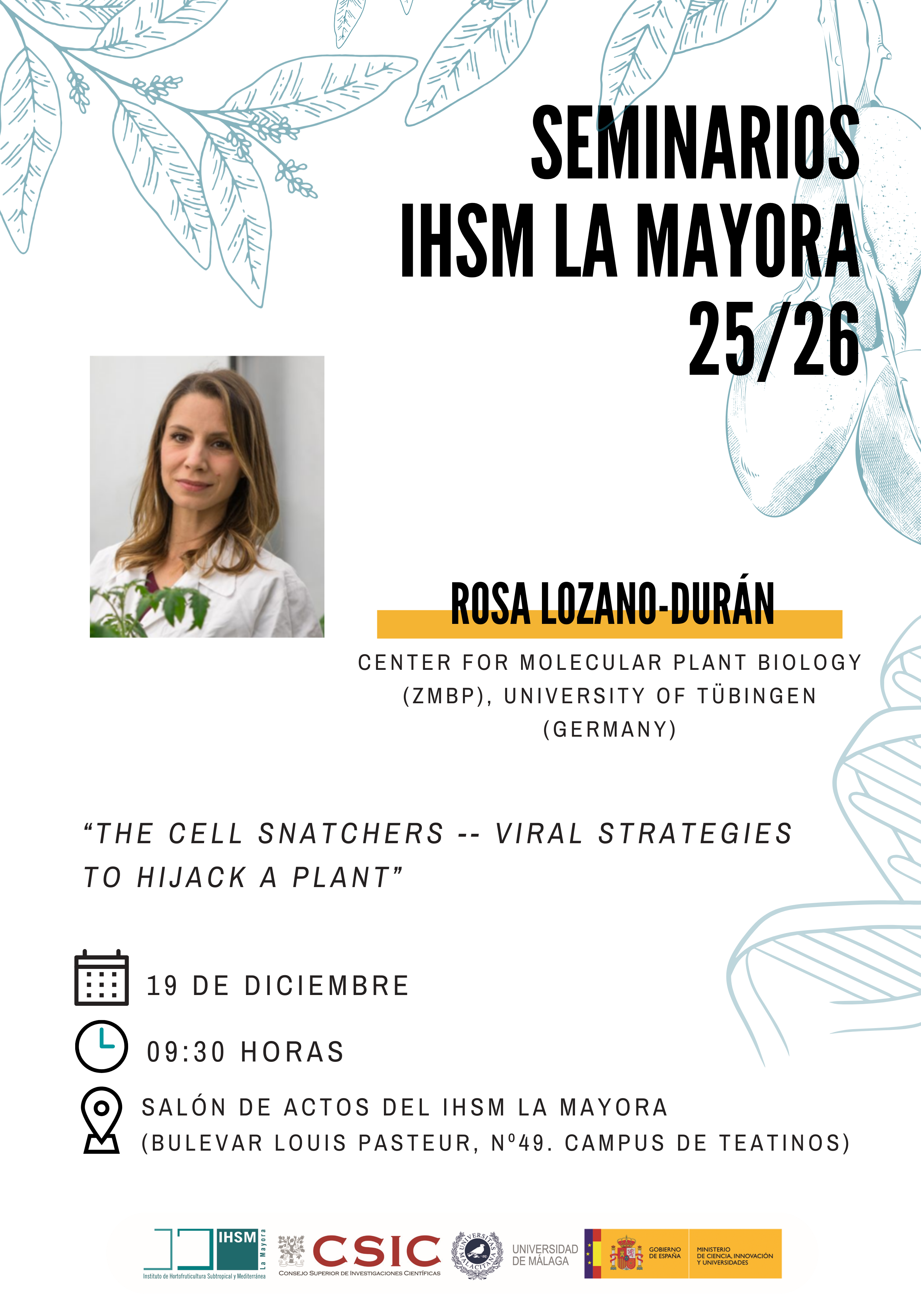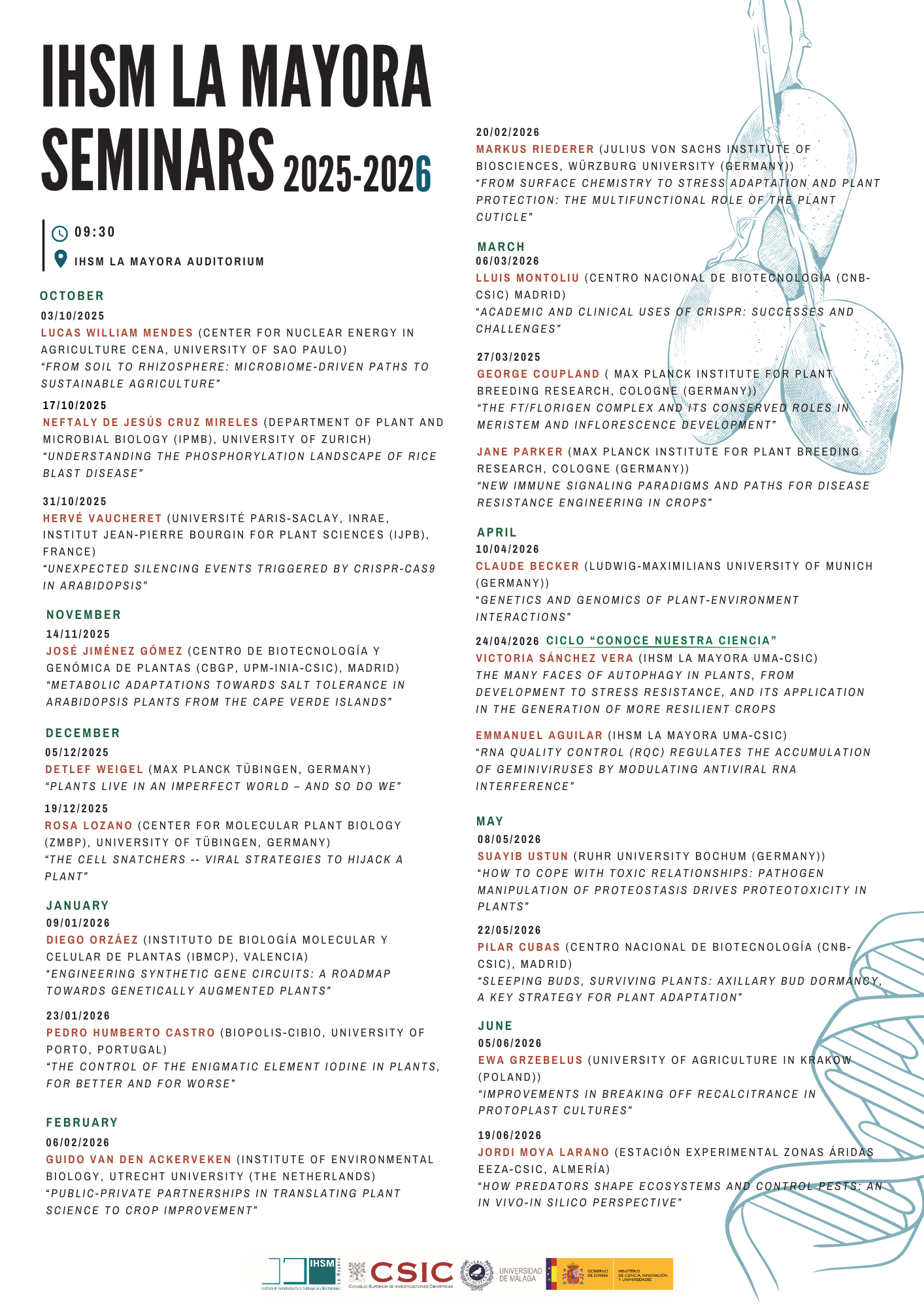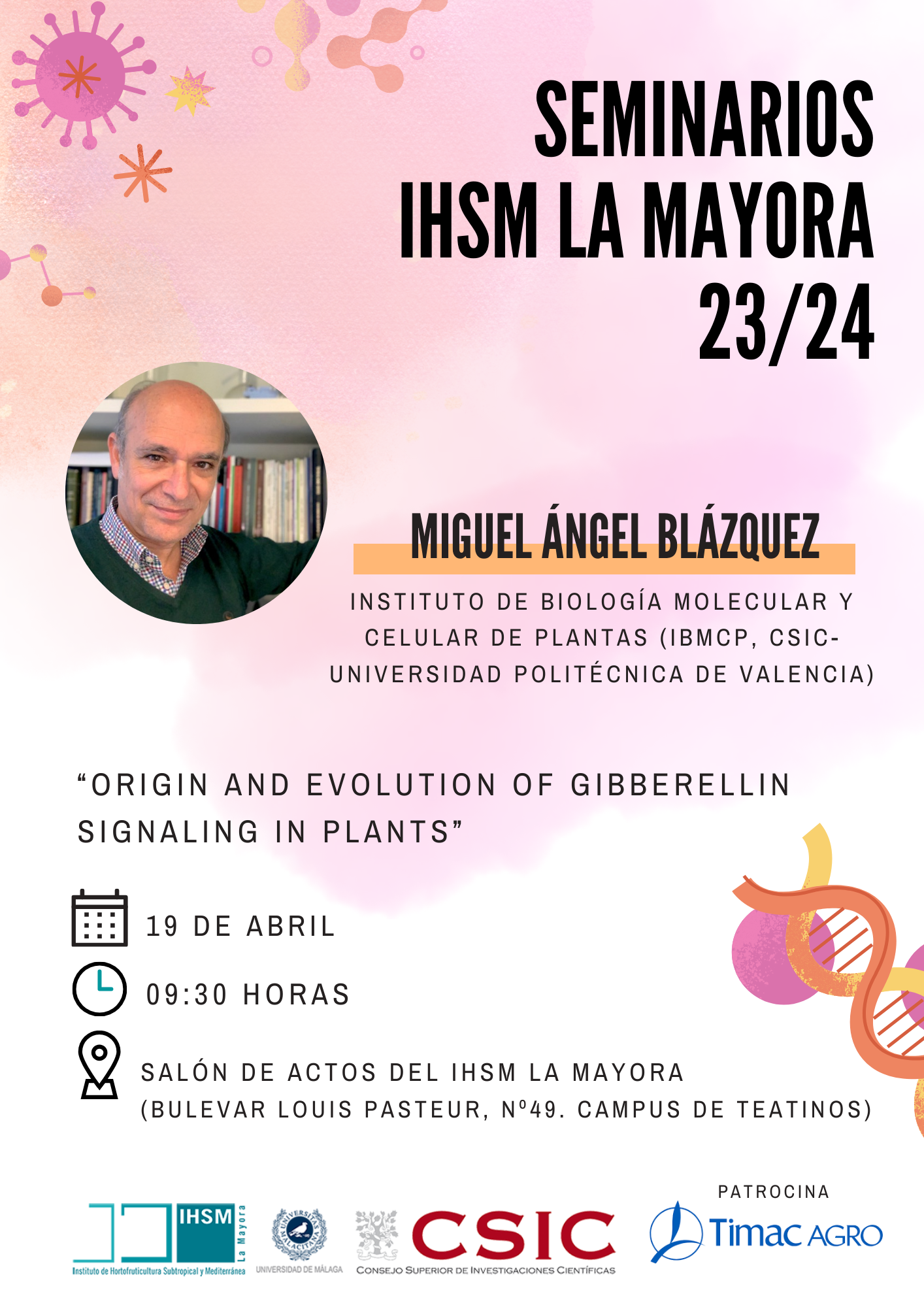
Seminarios IHSM La Mayora - Miguel Ángel Blázquez (IBMCP, Valencia)
Gibberellins (GAs) regulate multiple functions during a plant’s life, from seed germination to the size of vegetative organs, flowering time or fruit set, as well as the response to abiotic stress and pathogen infections. How a single molecule can perform so many roles has been a long-standing question until relatively recently, when the GA signaling pathway that controls gene expression was elucidated. GAs are perceived by the soluble receptor GID1, which then targets DELLA proteins to proteasome-dependent degradation. DELLA proteins are localized in the nucleus, where they interact with dozens of transcription factors (TFs) and regulate their activity. It is through this promiscuity displayed by DELLAs that GAs can regulate multiple transcriptional programs in order to optimize growth and development under different environmental situations. However, not all plant lineages can synthesize and perceive GAs. Bryophytes, which diverged from tracheophytes 400 million years ago, have been using DELLA for the same biological function –the coordination between growth and stress responses– without proper GA synthesis or a GID1 receptor. In this lineage, DELLAs can also interact with basically the same set of TFs as in tracheophytes, indicating that promiscuity was already encoded in the ancestral land-plant DELLA. Despite this conservation, the actual processes regulated by DELLA in each lineage are largely divergent due to rearrangement of the associated transcriptional networks. Our comparative evolutionary analysis suggests that GA signaling was an innovation in vascular plants that emerged through the co-option of a specific domain of DELLA proteins that acts as a conserved transcriptional co-activator.

